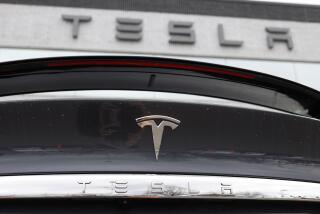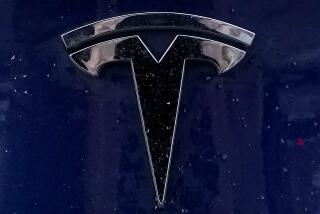Toyota to Increase Prices Markedly on ’95 Models : Autos: Imports will cost an average of 6.1% more. Company is struggling to stay profitable as yen’s value rises.
- Share via
In a fierce struggle to maintain profitability in the face of a rising yen, Toyota Motor Co. on Friday announced a significant boost in the prices of its 1995 model cars.
The Japanese auto giant said the 1995 model import will cost an average of $23,035, up $1,333--or 6.1%--from the initial price of 1994 models and $820 above current prices. The average U.S.-made Toyota will cost $16,641, up $464, or 2.9%.
Other Japanese auto makers, including Honda, have also hinted at price increases, though they have declined to offer specifics.
The Japanese auto maker’s U.S. dealers say they are unconcerned by the price increases, insisting their buyers are loyal. But the new wave of price hikes could significantly cut into Japan’s share of the U.S. market.
“The average Japanese car is already $2,000 more than its domestic counterpart,” said David Cole, director of the University of Michigan’s Office for the Study of Automotive Transportation. “People are recognizing they now have a choice of better domestic cars.”
Japanese auto makers raised sticker prices twice over the course of the 1994 model year, for a total average increase of about 4.8%. But when price increases resulted in reduced market share, the car makers in effect discounted prices by leasing more cars at below-market interest rates of 3% to 4% and depending more heavily on cut-rate volume sales to fleet buyers.
Such strategies have been effective in boosting Japan’s share of the U.S. market in recent months as unusually large numbers of American auto plants closed to retool for new models. With the new U.S. models entering showrooms, Cole said, the Japanese companies will face a tougher challenge.
They are in a weak position to defend themselves.
Analysts estimate that every 1-yen rise in the yen’s value against the dollar costs Toyota about $100 million in lost earnings. The No. 1 Japanese car maker’s latest price increase will only partially offset foreign exchange losses resulting from the yen’s 12% rise against the dollar over the past year. Indeed, some analysts speculate that the auto maker will be forced to boost prices again in the spring.
On Thursday, Toyota announced that its earnings for the year ended June 30 were $1.26 billion, down 29% from the year before and down 75% from their 1990 high. Sales fell 8.3% from the year before to $94 billion.
Although Toyota has successfully cut costs in recent years, it is already a lean company and has little fat left to cut. Any decline in sales resulting from price increases could actually raise costs by creating excess capacity.
“It’s a classic business dilemma,” Cole said.
The good news for Toyota is that price increases for its U.S.-made autos were more modest than for its imports because of the success of the firm’s campaign to use more American parts at its U.S. plants.
“Our intense efforts to localize our supply sources for the U.S.- built Camry have enabled us to hold the average price increase on the entire Camry line to a mere $34 over final prices of comparably equipped ’94 models,” said Dave Illingworth, vice president at Toyota’s U.S. headquarters in Torrance.
Japanese auto makers hope to reduce their vulnerability to exchange rate fluctuations by building more cars in America. Both Honda and Toyota have plans to sharply increase production here. By 1999, Honda said, it will sharply increase exports from its U.S. plants to 150,000, more than triple their level last year.
An improved home market could also help the embattled Japanese auto makers.
The Japan Automobile Manufacturers Assn., an industry trade group, said Friday that domestic sales rose 2.9% in July from the year before and will rise more sharply in August, signaling an end to the Japanese industry’s long slump.






